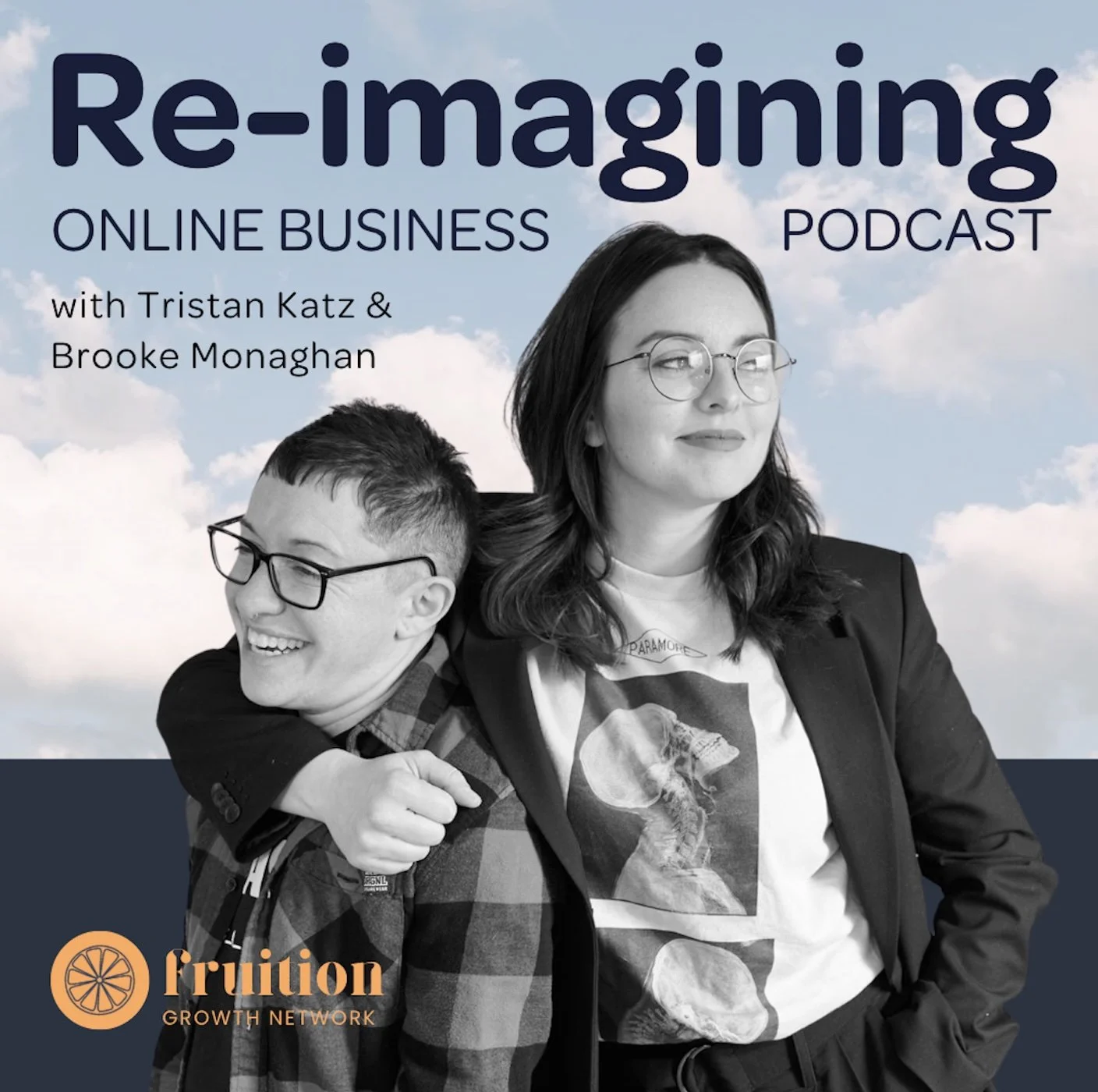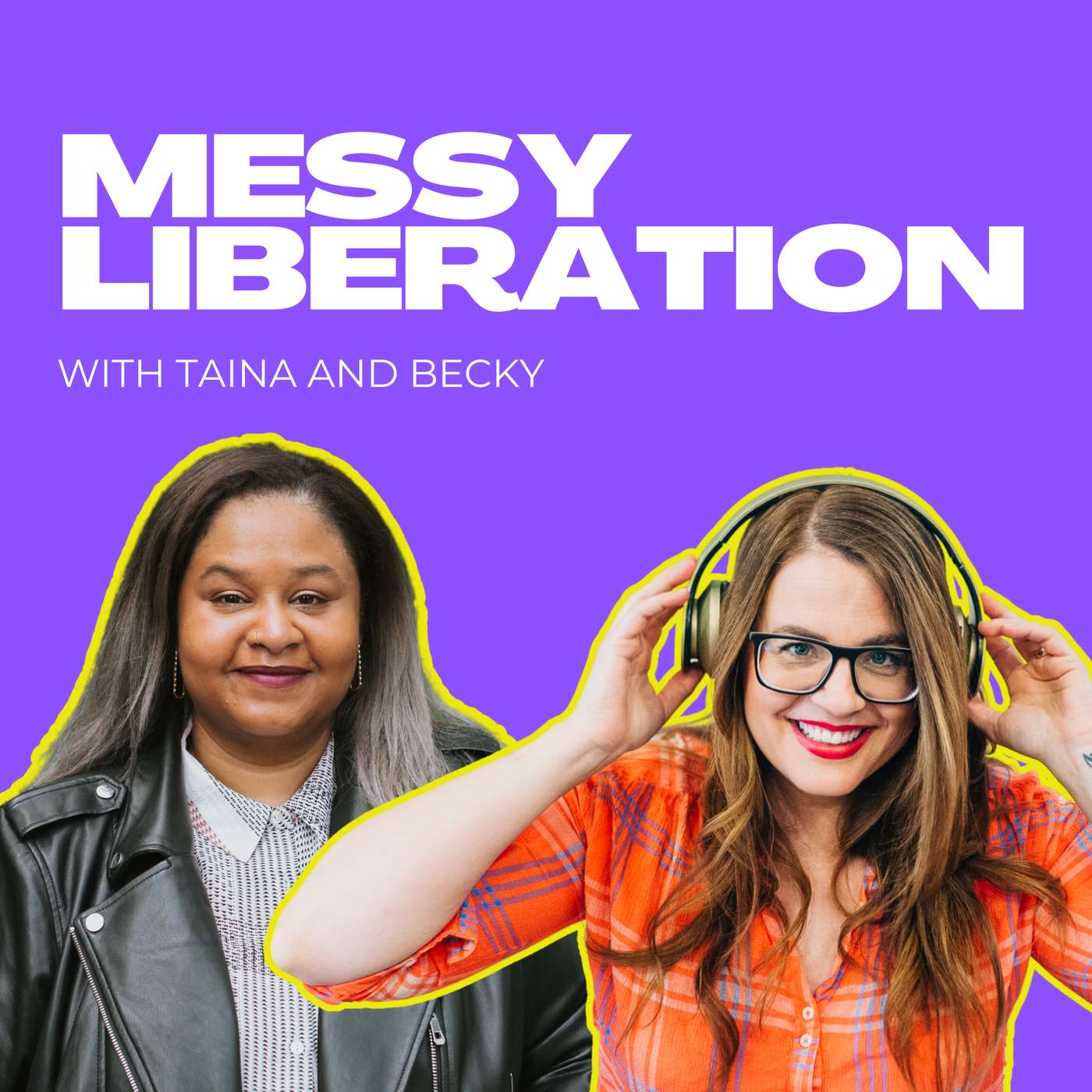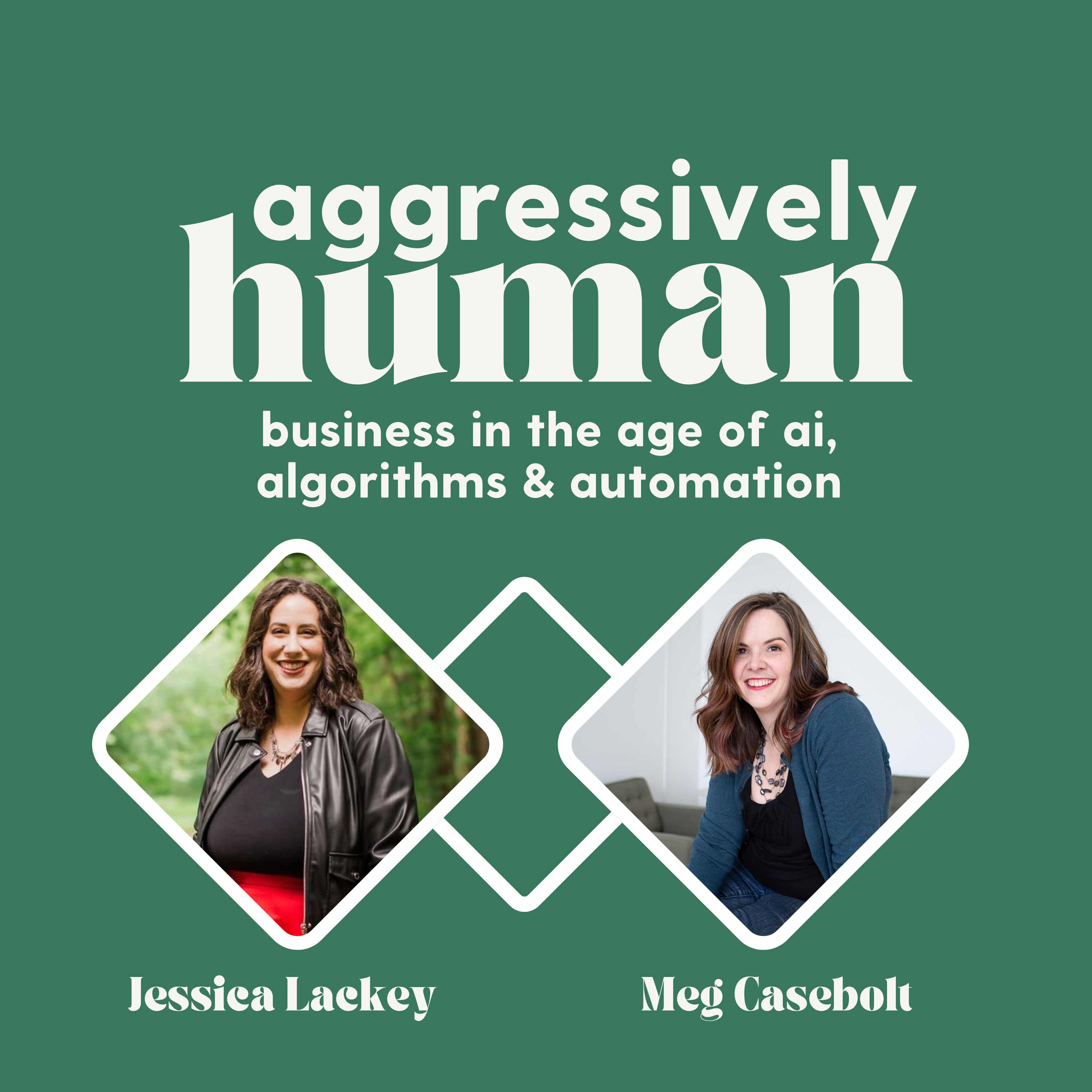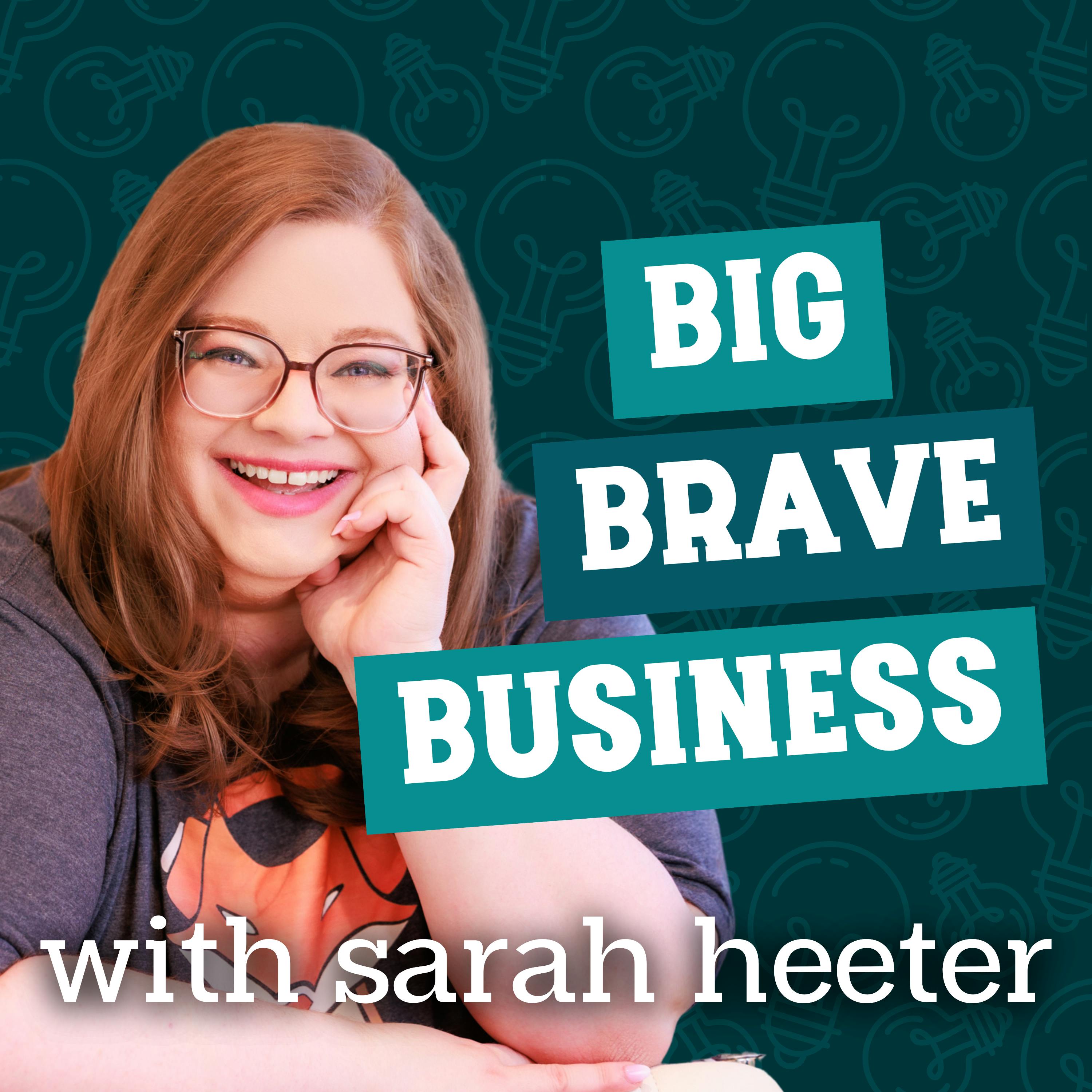.png)
Here's What I Learned: Ditching Biz-as-Usual for Values, Freedom, and Doing It Your Way
Welcome to Here's What I Learned, the podcast for progressive entrepreneurs ready to grow their businesses without sacrificing their values, creativity, or sanity. Hosted by me, Jacki Hayes—a systems strategist, unapologetic smutty romantasy fan, and D&D geek—this show is your go-to space for honest conversations about what it really takes to create a business and life you love.
Each week, we dive into relatable stories and actionable lessons from values-driven leaders who’ve figured out how to scale sustainably while staying true to themselves. Whether you’re managing growth, navigating overwhelm, or rethinking hustle culture, this podcast is here to show you that success doesn’t have to mean burnout.
If you value integrity, autonomy, and time freedom—and you’re looking for inspiration that’s as practical as it is empowering—you’ve found your people. Hit play, and let’s rewrite the rules together.
Here's What I Learned: Ditching Biz-as-Usual for Values, Freedom, and Doing It Your Way
Evolving as a Business Owner (Mixtape Edition)
This is the second mixtape I'm sharing as we head toward episode ninety-nine. The question this time: How have you evolved as a business owner over the years? You’ll hear short notes on what changed, what stayed, and how that shows up day to day—from editing offers and schedules to trusting your judgment and keeping plans simple enough to follow. If you missed the first mixtape, you can head back and catch it after this one.
Topics
- Redefining “success” so the business supports the life you want
- Editing offers, schedules, and metrics to reduce noise and increase focus
- Trusting your judgment and moving faster to learn faster
- Designing plans that hold on low-capacity days (simple, clear, doable)
- Choosing values-aligned clients and containers as you evolve
Bridget Baker is a collaborative brand + website designer who specializes in working with people who help people.
You can find Bridget at:
Website: bridgetbakerbranding.com
Instagram: bridget-baker-branding
Patricia Sung is an ADHD Coach for Moms who have ADHD. She supports mamas world-wide through her Top 5 Parenting Podcast with 1M+ downloads, Motherhood in ADHD.
You can find Patricia at:
Website: patriciasung.com
Instagram: motherhoodinadhd
What next?
- Follow Here's What I Learned on your favorite podcast player
- Leave a review so the podcast is seen by more people like you
- Share this episode with a friend
Say hi!
- Follow me on Instagram at @jackihayes_obm
Credits:
Intro and Outro Music: Atomic by Alex-Productions |https://onsound.eu/
Music promoted byhttps://www.free-stock-music.com
Creative Commons / Attribution 3.0 Unported License (CC BY 3.0)
Jacki Hayes
Hey there, welcome to Here's What I Learned. I'm Jacki Hayes, a system strategist, unapologetic, smutty romanticist-lover, Dungeons & Dragons geek, and your no-BS guide to building a business that works for you. This is the place where we swap stories, share lessons, and get real about the highs and lows of creating a life and business that actually feels good.
No cookie-cutter advice here, just honest conversations about what's working, what's not, and how to rewrite the rules to fit your version of success. So grab your favorite beverage, get comfy, and let's dive in. Welcome to another special mixtape of Here's What I Learned, one of three I'm sharing as we head toward episode 99.
For this one, I asked a simple question. How have you evolved as a business owner over the years? You'll hear short notes on what changed, what stayed, and how that shows up day to day. First up is Bridget.
You'll hear how her definition of success shifted doing more to doing what matters, how she edits her offers, her schedule, and her metrics so business supports the life she actually wants. Take a listen to Bridget. Last year, I ran an experiment in my business that did not give me the expected results, and here's how I responded.
Bridget Baker
So essentially, as a web designer and brand designer, I was looking for an offer that would help people with their Squarespace websites. Rather than just going in there and playing around and tweaking and getting frustrated, I was going to help people design their sites essentially. So the way that this looks is there are two Zoom sessions with me to design those sites.
The first session is a two-hour Zoom where we get into Squarespace together. I'm essentially showing people how we can design things. We're coming up with whether they're using existing branding elements.
We can plug those in. If they've already done some branding work, we can plug that in. If not, we can pull from the best option that we have.
What are they already using? What colors do they like? What's in their Instagram feed? We can build around that. So I built a website for someone based on this, and what I did not realize was the part that was the unexpected result. So I was thinking, great, they're just ready to go.
Let's put it all into Squarespace. Essentially, in this offer, it's versus using a template where someone buys a template, and then they have to learn how to plug in the template, and then they have to think of what they want to put in there. It's me even making suggestions on what goes where in the website, what you need to have.
Because again, you can plug these things on automatically from Squarespace, but they don't necessarily apply to your business or what you're doing. So this is sort of me half custom designing with someone and then giving them the keys essentially to design their own Squarespace website and teaching them how. So after we have our session together, I design a few pages on the website, and then I give them back in tutorial videos on how to edit, customize just for their site.
So it's not like boilerplate videos. It's literally just me looking through, talking about their specific pages they'd want to add, challenges that they might have, questions they might have, things like that in the videos. And then I hand it off to them, and then they essentially take those three pages and build the rest of their website from that.
What was happening was people would get stuck. They would get stuck in the overwhelm of, oh gosh, now I really have to put myself out there. I have less excuses.
All of the emotional things would come in to factor into it, as well as carving out the time and space to get it done. I realized what was missing was an accountability piece. If the offer felt just kind of incomplete to me, even though it worked well as far as structure and my time boundaries and things like that.
So what I added in was 30 days later, they come back to me. So I've got an accountability piece for them. I check in throughout the 30 days.
How's it going? Do you have any questions about the video? That kind of thing. And then at the end of the 30 days, I check back in. We have another one-hour Zoom session, and we wrap everything up.
So if any links aren't working right, if they need any tech support on Squarespace products and pieces, they want to ask any questions maybe on, hey, I want to add something in later. How do I do that? I can help in that session. And then also I'm looking at the mobile view to make sure that's done correctly and helping them on how to be aware of how to make changes as their site changes and grows.
I learned that me thinking people needed less, they actually needed a little bit more. They actually get stuck in the overwhelm, which then I add in that coaching element in the work I do. So I'm listening to them.
I'm supporting them. I'm knowing that it's scary to put yourself out there and holding their intention for why they wanted to create that website in the first place and helping them get to the finish line.
Jacki Hayes
Next is Patricia from Motherhood in ADHD. Patricia shares three shifts that changed how she runs her business, trusting her own judgment, moving faster to learn faster and keeping plans simple enough to follow, especially on low capacity days. Here's Patricia.
Patricia Sung
Hey there, this is Patricia Sung from Motherhood in ADHD.
And here is my answer to how I have evolved as a business owner in the last few years. I think I've learned three things. Number one is I have evolved by greatly increasing my confidence.
And this isn't actually like a business specific lesson. But when I first started, I really questioned pretty much everything I was doing, like, well, should I be doing this? And I was constantly seeking outside opinions. And there is a time and place for that when you're starting out a business is to get wise counsel from others.
But now that I am further along, I have greatly decreased the amount of voices and outside counsel that I seek. I really vet the type of advice and encouragement and criticism that I allow into my space. The only reason I was able to gain more confidence is, well, I would say three things.
One is I'm solidly in midlife. I just have less cares to give about what a lot of people think. And I am now looking for other people's validation.
I just don't have time for that. And so I think with time, wisdom increases. And that's obviously something you cannot do without time.
But it's been a big help. The things that I can attribute to actual action to. The second one is gaining experience.
The more experience you have in your business and when you're actually in there doing the work, that's what gives you the data to know that this is a wise decision or it's not going to come together, even though you tried your best. You only get that information through action. So the more experience you have, the more you can draw on your experience and your background, which I'm going to draw on that in a second.
And then the third part is working on my self-trust. And I do a lot of work with neuroplasticity and rewiring the way that we think about ourselves and trusting ourselves and knowing ourselves so that when I go to make a decision, I now know what it feels like to listen to myself and what I need and what I want. It's what allows me to draw those boundaries of, I don't really care what you think anymore.
I'm going to do what I know is best for me and my family in this situation or me and my business in this situation. And that neuroplasticity work that allows me to stop those ugly patterns of beating myself up and telling myself I'm not good enough and that imposter syndrome and all that yuck that sits in our brains and that negative internal narrator who's telling us that we're not doing enough or whatever it is that your voice tells you that's poo-pooing on the situation. Being able to rewire that and not allow that internal narration to drag me down has been immeasurably valuable to trusting myself and knowing who I am, but then in turn increasing my confidence because I know that I'm listening to what I need.
Then drawing about on the thing that I just mentioned is that the second thing that I have done to evolve as a business owner is to try to fail faster. As I said, you only get data by action. You can think about stuff and research a lot and ask for a lot of opinions, but you're not actually going to know the answer until you do it.
So now my goal is to try to fail faster. Put it out there, see what happens, what do people say, and if it's not working, okay, I'll adjust. But there is no way to actually get the information until you do it.
A lot of times when you are somebody who has ADHD, you spend a lot of time in your head thinking and we can't gain wisdom by pondering in our heads. At some point, you've talked yourself into circles and you got to get out there and do it. Then the third thing that I have really embraced in the last couple years is starting simple and keeping things really simple.
So my schedule, I try to keep simple. My commitments, I'm simplifying. The less draws on my attention and my capacity and my energy, the better.
Because I can always do more things. On the days where I'm in a good mood and I'm raring to go, let's tackle the world, I can always do more. But on the days where I can't, I can't.
So keeping the bare minimum as low as possible really allows me to go all in on the things that are important to me and my values. So I have capacity for my family. I have capacity for my kids.
I have capacity to take care of myself. Then keeping those draws on my energy levels lower allows me to have more space to be able to show up in the ways that I want for my family, but also allows me to do things like my business, which I don't have capacity for when I'm having a low day. The other side of this idea of simplicity is when I first started, I would have the most intricate plans.
I would try to think of all the contingencies. There is a balance of like, yes, you need a plan. You can't just go in willy-nilly because you never know where you're going to end up if you don't have a plan.
But my plans were too detailed. I wanted them to be just right. I wanted them to be like the perfect plan, and I was spending so much effort making the most excellent plan that I wasn't actually using the effort to do the plan.
It's like you just have to start. You just have to start. Take the first step, see what happens, and then adjust from there.
Keeping it simple with avoiding as many shiny objects as I can. Like I have ADHD. I got another good idea over here.
Look at that thing over here. What? We could do all this. No, we can't.
Like getting real with myself and being like, I don't have the extra time, dollars, energy, like whatever that capacity is needed to chase all these things. So keeping myself as streamlined as possible allows me to put as much energy as I can into that whatever project is I'm working on. So keeping it simple.
And again, like as you build your business, you will learn the basics of what you do need. So you'll understand better like what is the basic plan that I need. Like a lot of times like when you're a brand new business owner, you're like, oh my gosh, I have to have this really pretty website, and I really care about my branding, and my logo, and the colors, and all that.
And like really that's not the most important thing. Yes, you can have really bad website, or like ugly brand, or things that don't make sense, and people that can't tell what your business is. Yes, there's like some basic level you need there, but the amount of time and effort that I watch like new business owners now being like, what should I make my podcast cover art look like? And they're spending like hours on this logo, and the color like that doesn't matter.
And you're wasting your time spending like 20 hours on that when really that's like a two-hour project. Those lessons though, like you learn with time, you learn with experience, and you learn as you go. These are the things where that like really matter.
And these are the things that are like, well this is just for fun. And if I have some extra luxurious time today to fiddle with colors, lovely. But if I only have an hour, what's really going to move the needle in my business is this.
And so knowing yourself and your business well to be able to say, these are the bare minimums, and just starting with that simple plan, that's where to start. Because I was the worst of creating the most perfect complicated plan. And then of course, things never went as I expected.
And that was a lot of wasted time planning on things that never came to fruition. To sum it all up, I've evolved most in increasing my confidence, and that's by getting out there and doing the thing, failing faster, so that I can get the data and know what works as quickly as possible. And then keeping things really simple, so that I have the basic plan.
But then from there, I am changing and modifying as I go, so that I am actually using my effort on the things that are really moving the needle in my business. So good luck, my dear. Go get them, make that project happen, and just start.
Jacki Hayes
Listening to Patricia had me thinking about my own shifts, not just in offers, but in how I work, and what I won't trade off anymore. Here's how my role evolved on paper, and what changed underneath it. I came into this world as a subcontractor, an agency VA, good at getting things done.
But even then, clients kept coming to me for something else. Help me think this through. I could do the task, but what mattered most was how I think.
I tried the obvious next rung, online business manager, and learned fast, I don't want to manage people. What lights me up is clarifying the vision, naming the next steps, and seeing around corners so we avoid bottlenecks. The offers have changed over time, program coordination, launch ops, strategy days, but the thread is steady.
My best work is thought partnership and system strategy, not day-to-day management. That's the business model part of my evolution. The deeper part is me.
I've learned what kind of work brings out my best. Short, focused planning, clear constraints, real decisions made in real time. I've learned I'm only at my highest value when I'm asking better questions, naming trade-offs, and thinking 10 steps ahead so my clients don't have to.
I've learned to design offers that match how I work on my best days and my low-capacity days because both are real. I've also gotten clear on who I'm here for and what I won't compromise. The values and politics of how someone runs their business matter to me.
I want to support people and companies whose practices line up with what I believe, about access, about consent and marketing, about sustainability and care. That clarity makes choosing clients easier. Along the way, I've become much better at noticing early signs of burnout and adjusting before the crash.
Fewer marathons, more sprints with recovery built in, fewer everything launch plans, more simple containers people can actually follow. If I had to name the shifts that changed everything, they echo what you heard from Patricia. Trust my judgment.
When the work pulls me into strategy, I let it. I don't force myself into roles I don't want so I can fit a label. Move faster to learn faster.
I test in small ways, short engagements, so I can see what's working without overbuilding. Keep plans simple enough to follow. Clear goals, clear scope, and next steps that survive a real Tuesday.
Today, my business centers on thought partnership and system strategy for creative service providers. I help you name the outcome, map the path, set the constraints that protect quality, and decide what happens first, next, never. I don't manage your team.
I make sure your team knows what to do and why. That's the difference. How I've evolved in one line, less do-it-all, more do the part that changes everything, and do it in a way that fits my values, my capacity, and the people I want to support.
Thanks for listening to this mixtape on evolution. If you want a quick reflection to take with you, name one belief you've outgrown, one habit you're keeping, and one way your business is simpler now than it used to be. If you missed the first mixtape in this series, you can head back and catch it, and our third and final mixtape drops next week as we move toward episode 99.
I'll see you then. Thanks for hanging out with me on Here's What I Learned. If today's episode gave you an aha moment, a laugh, or something to think about, make sure you're subscribed to my email list.
That's where I share even more tips, stories, and behind-the-scenes insights to help you simplify and thrive. And remember, you get to do business and life your way. Until next time, keep experimenting, keep simplifying, and keep learning.
Podcasts we love
Check out these other fine podcasts recommended by us, not an algorithm.

Mistakes That Made Me
Eman Ismail
Re-Imagining Online Business
Fruition Growth Network
Messy Liberation: Feminist Conversations about Politics and Pop Culture
Becky Mollenkamp and Taina Brown

